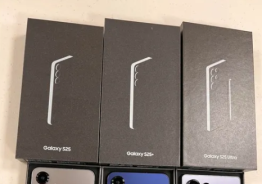Samsung is busy handling the popularity of the recently launched Galaxy S4 smartphone and rolling out Android Jelly Bean updates for its many of the devices; however, the real debate starts on the sidelines of these developments as a heart-breaking news pops up for the owners of many Galaxy devices.
According to some reports on the Internet, Samsung is planning to stop the Android updates for a number of Galaxy devices with Android 4.2.2 Jelly Bean update. The list of these devices also includes most of the old devices like Galaxy S2 and Galaxy Note, but at the same time it has very recently launched Samsung Galaxy Grand and Grand Duos.
The list of Samsung devices that are going to get the upcoming Android 5.0 Key Lime Pie has only five devices as of now, and according to SamMobile, which published the list, the list may become little bigger in future.
If Samsung is really going to implement this strategy for Android update, it is pretty clear that the South-Korean company is going to discontinue the production of many of its Galaxy devices very soon.
As Samsung's list of Galaxy devices is swelling really fast, company's manufacturing units and the suppliers are facing a tough time in maintaining the deadlines of the supply orders, and in this case continuing with two-year old devices like Samsung Galaxy S2 doesn't serve any purpose, especially when the price and the popularity of the device is also declining steeply.
Most of the devices, which are going to get Android 4.2.2 Jelly Bean as the last firmware update, have so many components in common that discontinuation of these devices will definitely ease Samsung's component supply.
Before the launch of Galaxy S4, many reports indicated that Samsung was facing issues with the supply of the Super AMOLED display, but the company denied the shortage.
However, Samsung cannot shrug its shoulders off the fact that its subsidiary unit, Samsung Mobile Displays (SMD), is facing supply issues. SMD did invest $2.2 billion in its AMOLED units but still could not meet the growing demand for the AMOLED screens with ease.
Estimating the demand of AMOLED display for the year 2014, market research firm iSuppli in its report said, "Shipments of small-sized AMOLEDs used in mobile phones and other applications are projected to reach 184.5 million units by 2014, up from 20.4 million units in 2009, for a Compound Annual Growth Rate (CAGR) of 55.1 percent during the period."
As Samsung has introduced the HD Super AMOLED display with the launch of Galaxy S4 it will be focusing more on this display than the earlier one and this is where maintaining a huge fleet of Galaxy devices becomes tough for the South Korean tech giant.
With other players such as HTC, Sony and BlackBerry starting to grab public attention during reputed annual tech events such as the International CES and the Mobile World Congress (MWC), Samsung will have to focus more on the latest technology with keeping the supply shortage issues away.
Although the moves like these look very like to come into effect, there are always chances of keeping some of the outdated devices in use for a couple of years. And if you are an owner of one of the devices waiting for Android 4.2.2 Jelly Bean update; don't worry, because the 4.2.2 update is going to deliver so much to your device that you won't feel like moving beyond that at least for a year.
© Copyright 2025 Mobile & Apps, All rights reserved. Do not reproduce without permission.

















